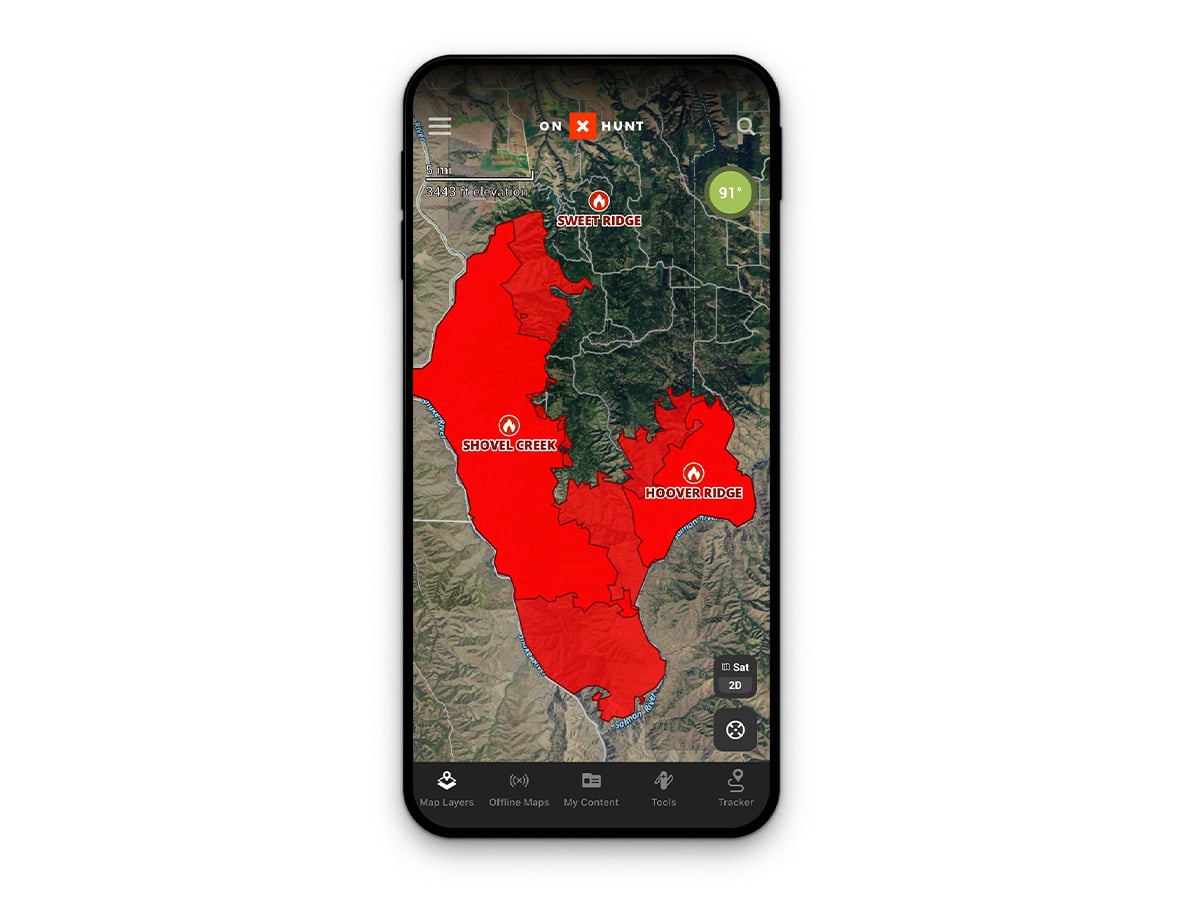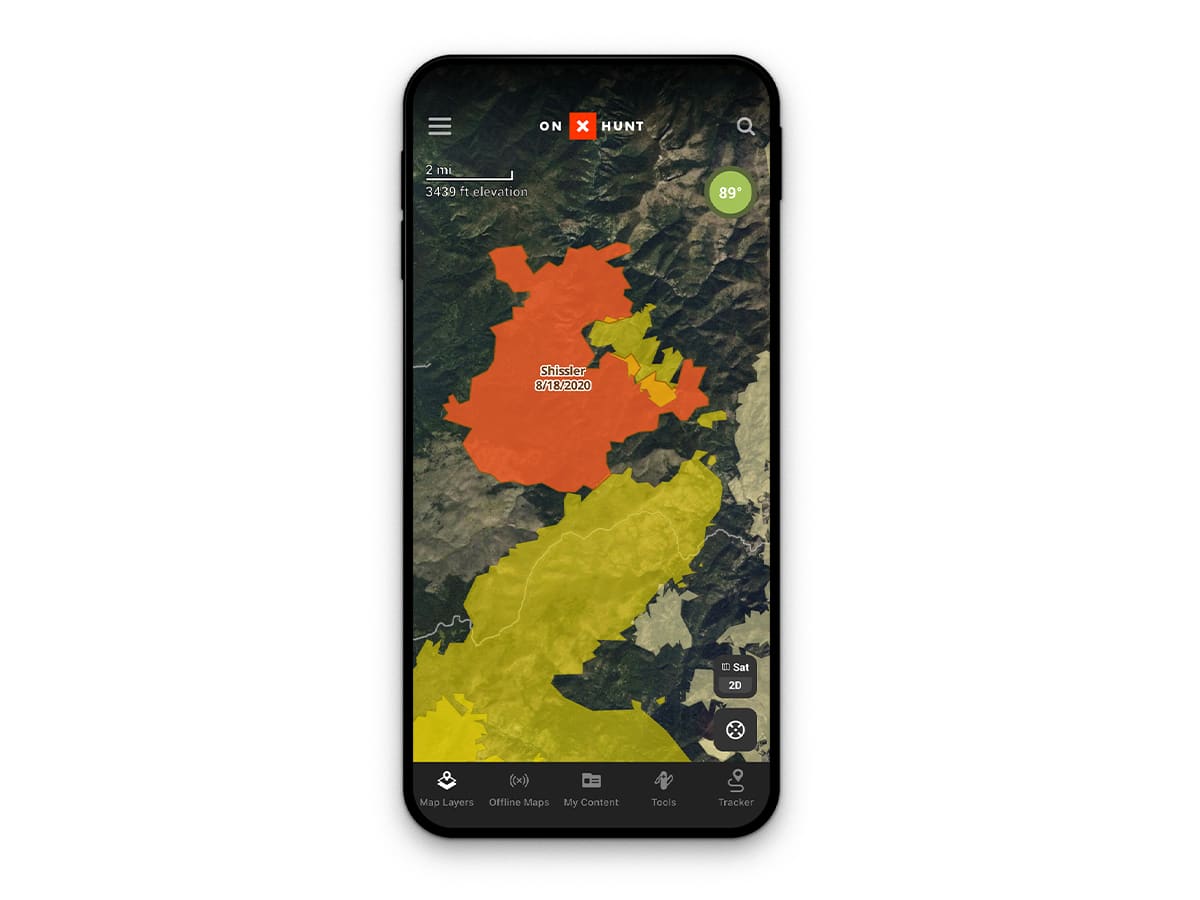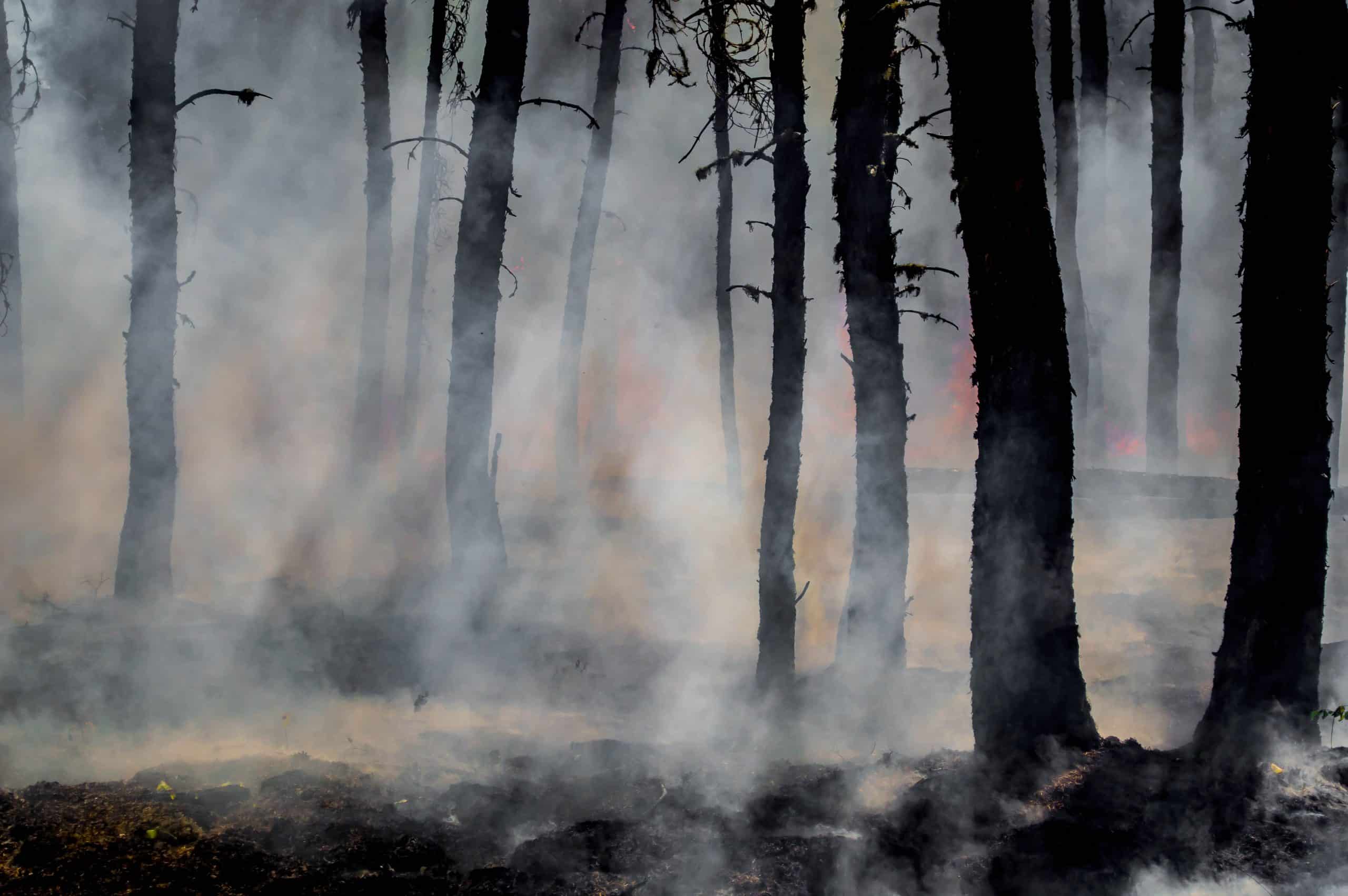Western hunters inevitably turn an eye to the hills, watching for puffs of smoke. Fire season has arrived. When we’re in the hills scouting with summer hunts in mind, it’s imperative to know the current fire situation, so we can stay out of the way of working interagency fire crews.
Active Wildfire Map Layer
We have an Active Wildfire Layer in the onX Hunt App for that very reason: to help you stay abreast of ongoing wildfires throughout the season. This nationwide layer displays the National Interagency Fire Center data, is updated daily, and is based on NIFC’s definition of active fires.
When you have the Active Wildfires Layer turned on, red flame icons mark active wildfire locations when you’re at a higher zoom level. When you zoom in, you’re able to view the current borders and the name of the fire. Tap inside the fire’s boundary to view more information, including the fire name, current size, and the date the information was pulled into the App.
Trent from Born and Raised Outdoors notes, “We’re always telling people that want to hunt elk out of state to have at least three different spots picked out, just in case you can’t find elk in your primary spot. With the up-to-date Active Wildfires Layer, you can save yourself a lot of time and miles if your second or third spot is right by a fire or—even worse—on fire.”

Historic Wildfire Map Layer
The chaos and damage of wildfires may make a forest look like a moonscape, but with that devastation also comes the opportunity for great hunting. Forest health depends on regular fires as the flames and ash release nutrients into the soil allowing new growth to form. The young generation of plants growing in burned areas provides high-quality food sources and attracts big game animals like deer and elk.
Here at onX, located in the Northern Rockies, we curse wildfires during the summer and sing their praises during the fall. It was in this constant tension that we found the inspiration for our Historic Wildfire Layer. This layer helps you target old burns by illustrating the extent of the burn, the year the fire took place, and the name of the complex.
Chad Bishop, director of Wildlife Biology at the University of Montana, says feed is the primary reason deer and elk seek out burned areas. When fires occur, ungulates take advantage of the high-quality forage a burn encourages, which isn’t always readily available.
How Wildfires Create Hunting Opportunity
Bishop said after a fire rips through an area, all plant nutrients are released and put back into the ground. The nutrients, which were previously held in trees and any other hard-to-digest plants, are converted into easily digestible grasses and forbs. The transfer provides elk and deer with a quantity and quality of feed in one concentrated area and starts within a year’s time.
The next set of plants to grow are smaller shrubs, which Bishop said also provide high-quality forage as they are only surrounded by a thin bark.
According to Bishop, the edges of the burns are especially significant, because they provide an area of cover right next to an area of feed. He has even taken part in prescribed burns on public land to give elk and deer a nutritional incentive to stay out of public agricultural fields.

It’s not as easy as finding a recent fire on your maps and hunting there, though. Bishop warns that not all burns make for good hunting opportunities. Prairie wildfires, for example, can lead to an explosion of invasive, non-native grasses in the aftermath of the fire, choking out native plants and impacting local wildlife.
Jack Ballard, author of Elk Hunting Montana and other books, likes to target burns between two and ten years old because it gives the area plenty of time to grow the new forage to which elk and deer gravitate. Ballard said you may occasionally find same-year burns that provide good hunting, but the burn has to happen mid-summer with plenty of early season moisture to jump-start the regrowth. He also advises that you pick your burns carefully because high mountain fires tend to have rocky soils which won’t grow new feed as well.
While feed is the initial reason animals travel to a burn after a few years, the new growth will also provide good bedding and cover. Ballard said the size of a burn doesn’t matter either, as he often hunts a burn of only 40 acres with great success. He advises hunting the timber along the edges of burns in the early mornings and late evenings as deer and elk travel from their bedding areas to feed.

If you’re willing to work hard, finding an isolated burn deep within the mountains or forest can produce tremendous results. Most people avoid these burns because of all the downed timber they create, but the elk and deer have no problem moving through deadfall and find the scattered timber to be a safe haven. Use caution when traveling in these areas, though. While it may be the secret hunting spot you’ve been searching for, burned timber is unstable and may fall over during high winds.